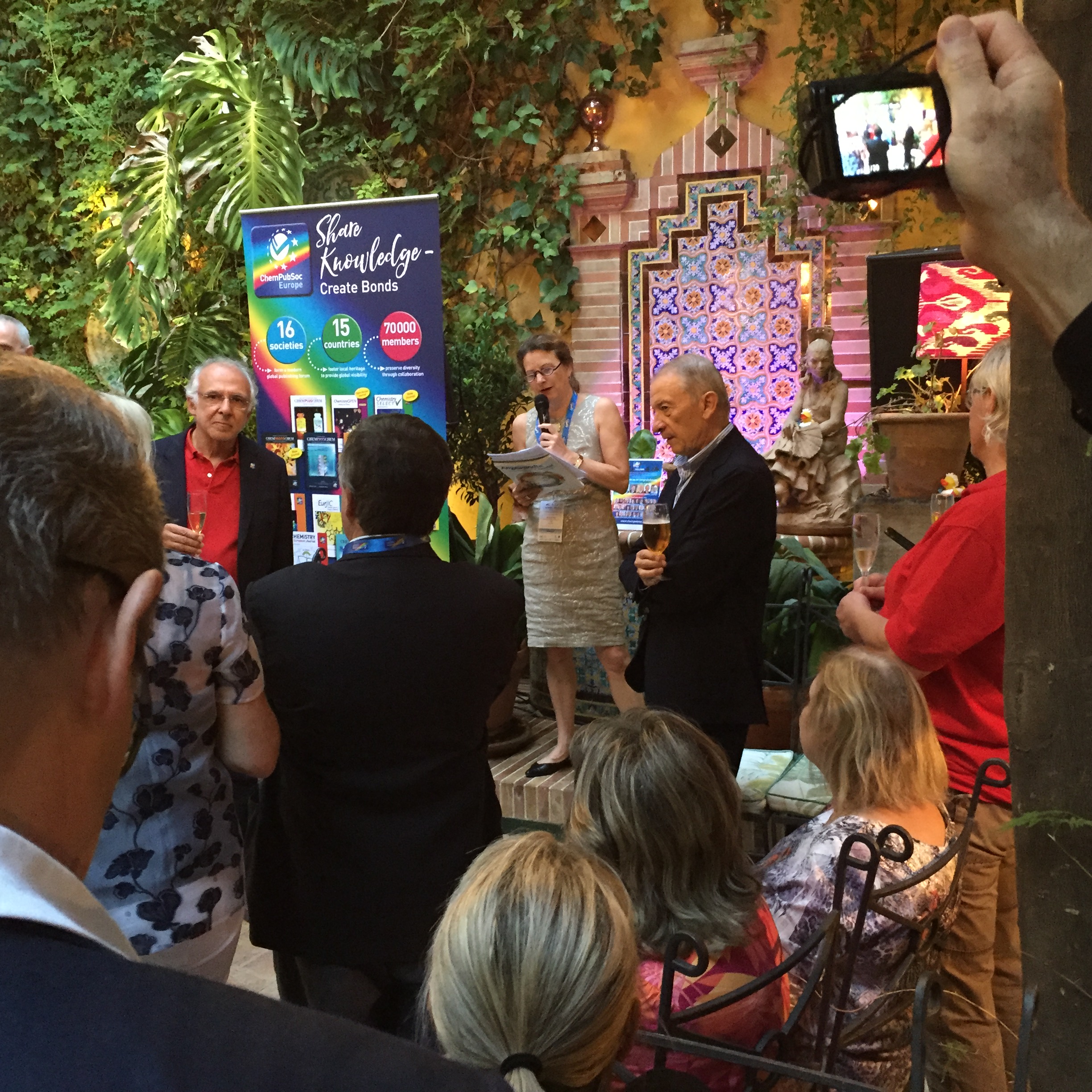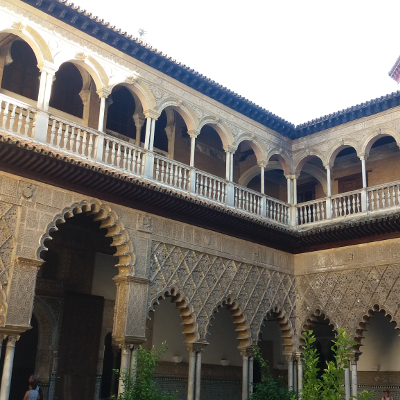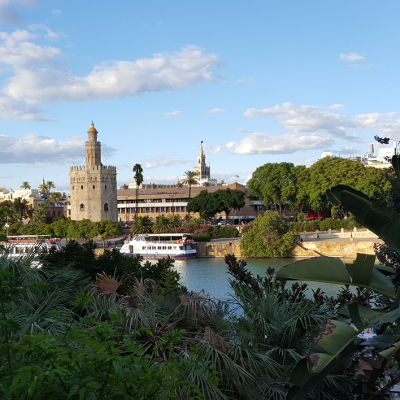The 6th EuCheMS Chemistry Congress (ECC) was held in Seville, Spain, from September 11–15, at the Seville Exhibition and Conference center FIBES. Approximately 1800 attendees from around the world discussed the latest research in chemistry and its applications in approx. 700 talks and had the possibility to visit the exhibition of 26 companies and organizations, network with the other participants, and enjoy the culture and history of Seville.
|
|
|
Impressions of Seville. |
Opening Ceremony
The event was organized this time by the National Association of Spanish Chemists (ANQUE) together with EuCheMS. The conference opened with addresses from Professor Carlos Negro, Congress Co-Chair and Complutense University of Madrid, Spain, Professor David Cole-Hamilton, EuCheMS President and School of Chemistry University of St. Andrews, UK, Ernesto Castañeda, ANQUE President, José Sánches Maldonado, Minister of the Government of Andalucía, Spain, Professor Peter Edwards, Scientific Committee Chair and University of Oxford, UK, María Carmen Clarisa Castreño Lucas, First Deputy Mayor of the city of Seville, Søren Bøwadt, EU’s DG Research & Innovation, and Pedro Miró, CEO of the Spanish multinational oil and gas company Cepsa. Each welcomed the attendees and expressed their belief in the quality of science to be presented over the next few days and emphasized the important role science, and chemistry in particular, plays in solving the challenges of today’s society.
|
|
|
Left: Professor Carlos Negro, Representative of the Organizing Committee at the opening ceremony; right: Professor Richard R. Schrock during his talk on olefin metathesis. |
The congress opened with a lecture by Professor Richard R. Schrock, Massachusetts Institute of Technology (MIT), Cambridge, MA, USA, and 2005 Nobel Laureate. He spoke about early metathesis chemistry and how it has led to what he is doing now. The research goes back to the 1950s; in 1964, the first paper was published, but it did not get much attention. The discovery of how important the reaction is for organic chemistry came later. Yves Chauvin was the first to write down the reaction mechanism of such a reaction in which olefins are chopped in half and redistributed to form new olefins. This then led to the development of a variety of highly efficient and selective catalysts in the Schrock laboratory.
At the end of his talk, Schrock had good news for those who consider it too hard to make a Schrock catalyst themselves: The catalyst will soon be commercially available in a paraffin capsule, thus removing the need to perform all the reactions in a dry box.
Talks
Professor Nazario Martín, University Complutense of Madrid, Spain, gave a plenary lecture in honor of the 1996 Nobel Laureate Harry Kroto, discoverer of Buckminsterfullerene, who recently passed away. According to Martín, Harry Kroto’s legacy to science is comparable to that of Kekulé’s discovery of benzene. Martín outlined many similarities between both scientists and their famous molecules – both started a real revolution in chemistry.
Another highlight was the plenary lecture by Nobel Prize winner Professor Jean-Marie Lehn, Laboratory of Supramolecular Chemistry, Strasbourg, France, to a packed auditorium at 8:30 am. He described the history of the chemistry developed in his laboratory over the last fifty years. Lehn received the Nobel Prize in Chemistry in 1987 together with Donald J. Cram and Charles J. Pedersen for their work on the “development and use of molecules with structure-specific interactions of high selectivity”. Lehn specifically was honored for his development of cryptands, three-dimensional multidentate ligands. His later research focuses on self-organization processes and constitutional dynamic chemistry.
|
|
|
Professor Jean-Marie Lehn during his plenary lecture. |
Professor Molly Stevens, Imperial College London, UK, gave a very impressive plenary lecture on the application of materials in medicine. She showed how even simple materials can elicit powerful biological responses and how in vivo bioreactors can be used for bone regeneration.
There were many more excellent talks presented at the eight different themed sessions. A selection of the topics covered can be found in the special issues of Angewandte Chemie and Chemistry – A European Journal that were prepared for the congress.
Awards
Awards presented during the congress included the EuCheMS Award for Service to Professor Helena Grennberg, Uppsala University, Sweden, and President of the Swedish Chemical Society. Professor Ben Feringa, University of Groningen, The Netherlands, received the August Wilhelm von Hofmann Medal 2016 from the Gesellschaft Deutscher Chemiker (GDCh, German Chemical Society).
Professor Gérard Férey, University of Versailles, France, who was a joint recipient of the EuCheMS Lecture in 2014 together with Professor Christina Moberg, Royal Institute of Stockholm, Sweden, presented his EuCheMS Lecture on this occasion. The Spiers Memorial Award 2016 from the Royal Society of Chemistry (RSC) was awarded to Professor Avelino Corma, CSIC-Polytechnical University of Valencia, Italy. Avelino Corma was recognized “for the introduction of new concepts for the synthesis of microporous and mesoporous inorganic materials and their application in heterogeneous catalysis, which have resulted in an extensive range of industrial applications”.
The European Young Chemist Award 2016 showcases and recognizes the excellent research of young scientists. This year, the gold medal went to Dr. Maria Escudero-Escribano, Postdoc from the Technical University of Denmark (DTU), while the Ph.D. level gold medal was won by Giulio Ragazzon from Bologna University, Italy. The award was initiated by the Italian Chemical Society (SCI) and the Consiglio Nazionale di Chimici (CNC) and this year it was organized by the CNC and ANQUE and coordinated by Professor Bruno Pignataro, University of Palermo, Italy.
|
|
|
The Finalists of the European Young Chemist Award 2016 (from left to right): Alessio Paternoò, Pavel Mykhailiuk, Mercedes Zurro de la Fuente, Ignacio Funes-Ardoiz, Veronica Postilis Ribò, Federico Bella, Alessandro D’Urso, Camilla Parmeggiani, Maria Escudero-Escribano (Gold medal winner, under 35 level), Filippo Monti, Silvia Osuna, Hugo Gattuso, Giulio Ragazzon (Gold medal winner, Ph.D. level), Bill Morandi, Daniele Leonori, Filippo Mangolini, Seraphine V. Wegner, Guillermo Minguez Espallargas (not in the picture: Ruben Costa). |
Chemquackers
This year the team of ChemPubSoc Europe editors was supported by the ChemPubSoc Europe/ChemistryViews.org duck (#chemquackers) at the EuCheMs meeting. The little #chemquackers duck really stole the show in the exhibition hall. Throughout the conference people were queuing at the ChemPubSoc Europe/Wiley-VCH stand to try and win one.
|
|
|
Chemquackers in the exhibition hall. |
The ducks’ adventures in Seville and back home in the lab are being posted on social media. What experiments will be carried out? Which duck will travel the furthest? Follow #chemquackers on twitter to find out!
Talk to your Editor
A “Talk to your Editor” event organized at the ChemPubSoc Europe stand gave Neville Compton (Chemistry – A European Journal), Anne Deveson (ChemistrySelect), Karen Hindson (European Journal of Inorganic Chemistry and ChemistryOpen), Marisa Spiniello (ChemPlusChem), and Vera Koester (ChemViews Magazine) the opportunity to talk with authors and board members about all issues related to publishing in the ChemPubSocEurope family of journals and their magazine.
|
|
|
Top left: “Talk to your Editor” event in the exhibition hall; top right: Dr. Anne Deveson, ChemistrySelect, and Professor Jesús Jiménez Barbero, CIB Centro de Investigaciones Biológicas, Madrid, and President of the Real Sociedad Española de Química (RSEQ); bottom (from left to right): Professor Livia Simon Sarkadi, Corvinus University of Budapest, Hungary, and President of the Hungarian Chemical Society, Professor Philippe Garrigues, Université de Bordeaux, France, and Vice-President of the Société Chimique de France (SCF), Dr. Neville Compton, Chemistry – A European Journal, Professor Henryk Kozlowski, University of Wroclaw, Poland, and Editorial Board Member of ChemPlusChem, Dr. Vera Koester, ChemViews Magazine. |
ChemPubSoc Europe Dinner
The ChemPubSoc Europe Fellows were celebrated at the ChemPubSoc Europe dinner on Tuesday evening. The event brought together several Fellows, Editorial Board Members, and Editors of the ChemPubSoc Europe Journals, including ChemViews.org, the magazine of ChemPubSoc Europe; as well as a good number of young chemists from both the European Young Chemists Network (EYCN) and the newly launched International Young Chemists Network (IYCN). The setting for this was the “Casa Manolo León”, a fantastic tapas bar tucked away in a narrow street by the river with a beautiful courtyard.
|
|
|
At the ChemPubSoc Europe Dinner. |
The guests were welcomed by Dr. Eva Wille (pictured center), Wiley-VCH, Germany, and Professor Luis Oro (pictured right), ChemPubSoc Europe Honorary Fellow and University of Zaragoza, Spain. It was a great opportunity for the Fellows to share their experiences and stories with young chemists from around the world.
Dalton Symposium
During the congress, a one-day symposium in honor of the 250th anniversary of John Dalton’s birth was held. The morning session was convened by Professor Mats Tilset, University of Oslo, Norway. The symposium began appropriately with a 45-minute lecture by science historian Rachel Dunn, Durham University, UK, on the life and scientific career of John Dalton. She packed much information and anecdotes into her presentation to give a lively impression of a most remarkable man. As a Quaker, who remained committed to his religion all his life, Dalton was soberly dressed in dark colors. Once the rule was broken in public, when he was awarded an honorary degree from Oxford University in 1832, for which he was given a red robe to wear. When asked afterward how he could reconcile the vibrant color with his faith, his response was that though others may call it scarlet, he saw it as brown-green, the color of nature. He was color-blind!
Dalton’s wide scientific studies stretched from physics and chemistry through colour-blindness to meteorology. He was also committed to the communication of science in an efficient way, with succinct language and visualization, for example, of the elements and their combination in chemistry.
This lecture set the tone for the chemistry slam session in which eleven candidates were selected from the Dalton Symposium poster session. The participants had four minutes each to present the link between Dalton and their chemistry. The winner was Karolin Materne, who showed parallels between her incipient career in science and the character and early career of Dalton.
The afternoon session was organized by Professor Sylviane Sabo-Etienne, Toulouse, France. Two additional historical lectures gave the background and the reason for the initially slow reception of Mendeleev’s periodic table (given by Dr. Brigitte van Tiggelen, Chemical Heritage Foundation, Philadelphia, USA) and the innovation of Berthollet’s chemical affinities at the turn of the 19th century (presented by Professor Pere Grapí, Autonomous University of Barcelona, Spain). The symposium was rounded off with four oral presentations of 15 minutes each by young chemists.
European Young Chemists’ Network (EYCN) Program
The European Young Chemists’ Network (EYCN) unites the divisions of the young members of 25 chemical societies in Europe. Under the title “Creating a Successful Career”, the EYCN hosted a three-day program which was well received not only by the young chemists. Topics included science communication, applying for a job, scientific writing, and how to become an entrepreneur.
“We are in a bubble”: There is a big gap between research at university and the needs of society. Another big gap is between academia and industry. In the opinion of Professor Javier García-Martínez, University of Alicante, Spain, and co-founder of Rive Technology, Cambridge, MA, USA, academic entrepreneurship can bridge these gaps. A good example to prove this is, in his opinion, Professor George M. Whitesides, Harvard University, Cambridge, MA, USA, one of the most influential chemists in the world today. He received the highest Hirsch index rating of all living chemists in 2011, holds 130 patents, and has been a part of the start-up team for a number of companies.
Fernando Gomollon-Bel, Belgium, spoke about sharing your love for chemistry and innovative ideas in science communication. He started with saying that “When you are in love, you want to tell everybody”. We as chemists are in love with chemistry, but “it seems chemists like to see the glass half empty”, he continues. We think the general public sees us as weird or strange, but a recent RSC survey showed, that only 12 % of the society think so. 84 % think that chemists make major valuable contributions to society. So, we should “think like a proton – always positive”, Fernando Gomollon-Bel recommends.
He continued by introducing innovative ideas on how to interest society in science and chemistry. Examples included science communication on twitter (e.g., tweet about your paper to get more visibility or #scicomm), combining art and science (e.g., www.principia.io), and a local tv program showing experiments in the supermarket and on the street. So let’s all start spreading the good news about chemistry to our families and friends.
Social Program
There were many opportunities to socialize in the evenings after the lectures. These included an organ concert with pieces from Bach and some modern variations given in the Seville Cathedral. The young chemists could attend the Career Networking reception sponsored by the GDCh (German Chemical Society) to learn about job opportunities and requirements and to make first contacts. The EYCN also started an experiment in science communication to the public with great success by organizing talks about science in a bar in Seville on Tuesday evening (Science Café).
The grand finale was provided by the two congress farewell dinners – one at the World Heritage site of the Royal Alcazar of Seville (a royal palace originally developed by Moorish Muslim kings) and the other at the Abades Triana Terrace (a restaurant with a nice view). These unique settings provided an unforgettable evening for all those who attended.
|
|
|
Left: Royal Alcazar of Seville; right: View from Abades Triana Terrace overlooking the “Torre del Oro”. |
EuCheMS Personnel
After long years serving this community, Professor Ulrich Schubert, Past President of EuCheMS and Vienna University of Technology, Austria, and Professor Franco De Angelis, Treasurer and University of L’Aquila, Italy, will be retiring from official EuCheMS service. Professor Pilar Goya, Universidad Complutense de Madrid, Spain, is the new President-Elect of EuCheMS. She is the first women in this position. The new treasurer, starting January 1, 2017, will be Professor Eckart Rühl, Free University, Berlin, Germany.
Next EuCheMS Congress
Each EuCheMS Congress is held by a different country to allow the host country to present their scientific, technical, and cultural abilities. The 7th EuCheMS Chemistry Congress will take place in Liverpool, UK, 26–30 August 2018. The theme will be “Molecular Frontiers and Global Challenges”. We look forward to the exciting new chemistry discoveries en route to this event.
- EuCheMS Award for Service,
ChemViews Mag. 2016.
Helena Grennberg honored for outstanding commitment to fostering chemistry and molecular sciences in Europe - August Wilhelm von Hofmann Medal for Ben Feringa,
ChemViews Mag. 2016.
Gesellschaft Deutscher Chemiker (GDCh, German Chemical Society) honors outstanding achievements in chemistry - ChemPubSoc Europe Fellows Program,
Eva E. Wille, Secretary Fellows Program of ChemPubSoc Europe,
ChemViews Mag. 2015.
A Unique Experiment – A Unique Success: European Chemical Societies Instigate Honors Program
Also of Interest
- How to Become an Academic Entrepreneur,
ChemistryViews.org 2014.
Nine tips by J. Garcia-Martinez to successfully turn discoveries into an everyday reality
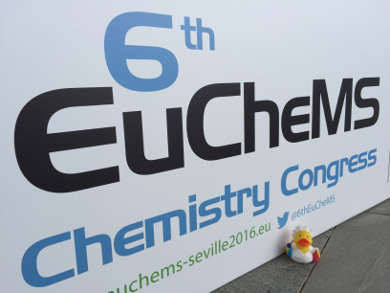
.jpg)
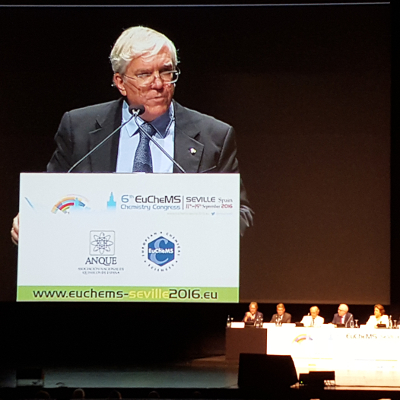
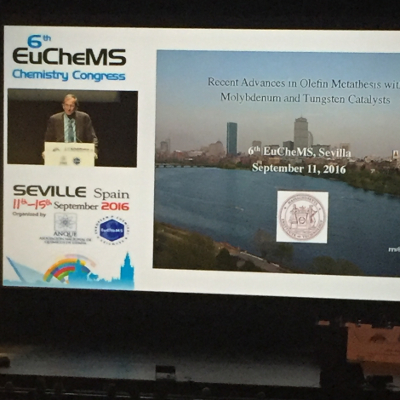
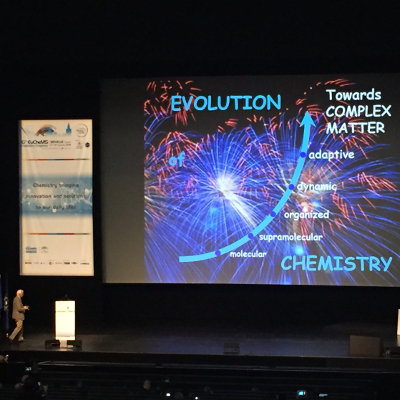
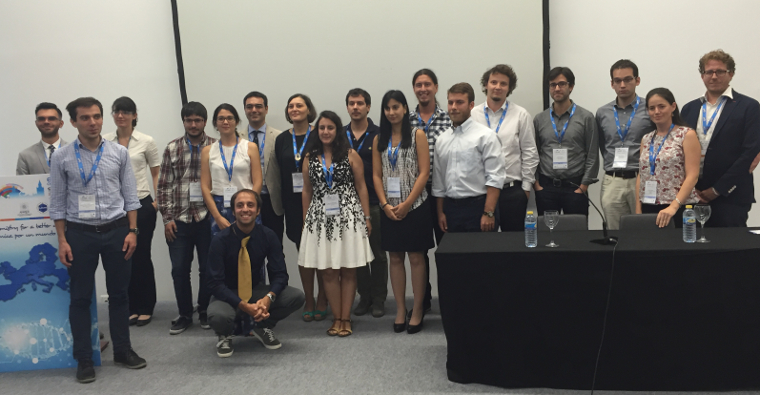
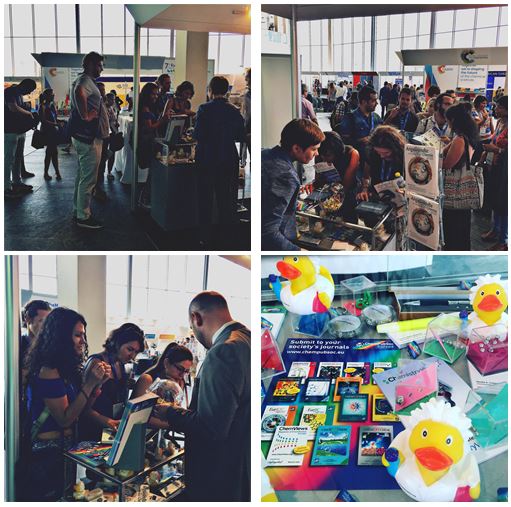
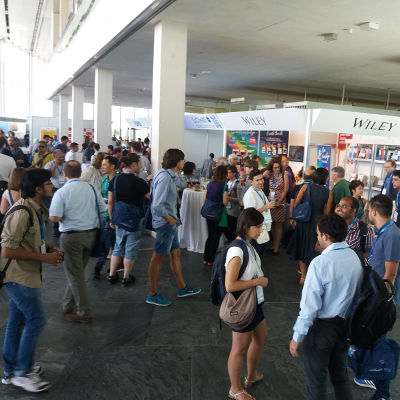
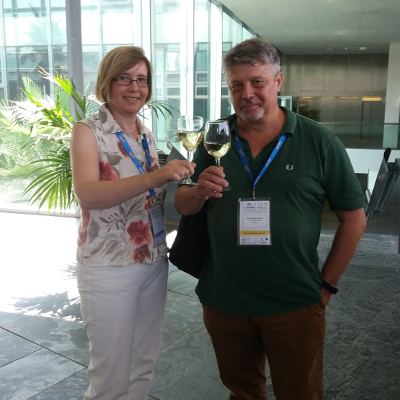
.jpg)
